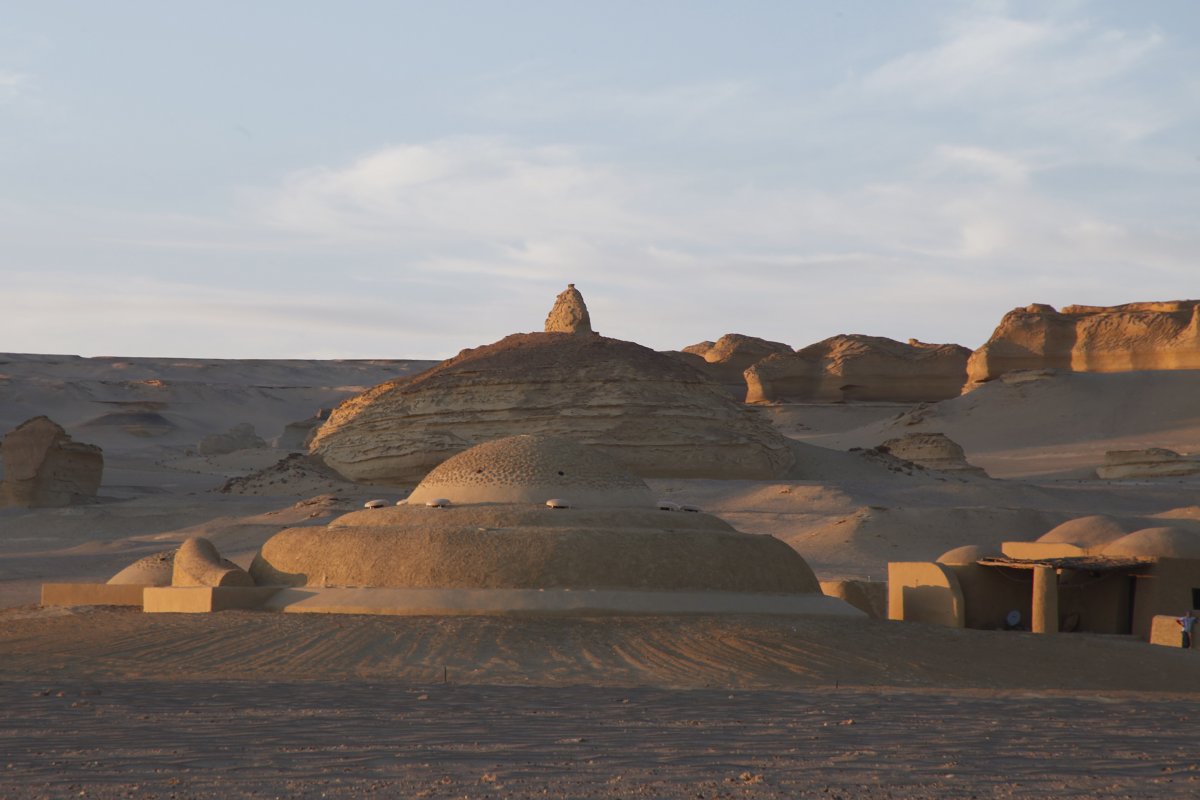Supporting Egypt to advance their NAP process
Project Overview
Nov 2015
Egypt submits their Intended Nationally Determined Contribution (INDC) to the Paris Agreement
Mar 2017
The Ministry of Environment holds workshop where NAP-GSP learns about gaps and entry points for NAP process
Jun 2017
Egypt ratifies the Paris Agreement
June 2017
Egypt submits a Readiness and Preparatory Support Proposal to the GCF
Nov 2017
An Adaptation Task Force, representing all key line ministries, is established to act as the operational arm of the National Council on Climate Change (NCCC)
Apr 2018
The Government of Egypt hosts the NAP Expo 2018 in Sharm el Sheikh
Nov 2019
UNITAR and NAP-GSP finalise skills assessment and prepare a capacity development plan for Egypt to undertake to improve climate adaptation capacity
Country background, Sustainable Development Goals and Paris Agreement
The Arab Republic of Egypt is dry, hot and mostly arid, with a mild winter season and a hot and dry summer. Egypt’s landscapes, people, and economy are highly vulnerable to the ongoing impacts of climate change and the Intergovernmental Panel on Climate Change (IPCC) listed the Nile Delta as one of the world’s three “extreme” hotspots. National development is challenged by the increasing frequency, intensity and magnitude of extreme weather events such as heat waves, flash floods, and heavy precipitation, as well as sand and dust storms. Damage to infrastructure, beaches and fertile land, as well as salt water intrusion is projected have most severe impacts on the water resources, agriculture and fisheries, energy and tourism sectors.
Egypt is already Africa’s third most populous country, with 96.6 million residents (2016), high population growth, at over 2 percent per annum, and rapid urbanisation is putting serious stress on water supplies. These already prevalent issues will be compounded by climate change impacts, further threatening water security, food security, and the health of the human communities and biodiversity. The agricultural industry - already responsible for 85 percent of water consumption – will be restricted by water availability. Climate change studies have already predicted that this, among other impacts like higher temperatures and more prevalent pests, will likely reduce the productivity of the two major crops – wheat and maize – by 19 percent by 2050. Other economic impacts will be felt through the productivity of solar and other energy infrastructures, as well as the through the tourism industry, which will be hampered by dust storms and heatwaves. Egypt’s ability to respond to these impacts is challenged by low technical capacity for adaptation planning and limited information on the severity of climate risks and vulnerabilities. Climate change impacts detrimental to economic productivity will further reduce Egypt’s capacity to address these issues.
The Government of Egypt has sought to address these issues through a number of institutional arrangements, such as the National Adaptation Strategy (2011) and the Sustainable Development Strategy – Egypt’s ‘Vision 2030’. Moreover, in 2015, Egypt submitted an Intend Nationally Determined Contribution (I/NDC) to the Paris Agreement as well as embarking on a process to develop a NAP. The NDC highlights the country’s climate vulnerabilities (agriculture; coastal zones; tourism, especially coastal-orientated tourism; national heritage; health; and energy) as well as outlining conditional commitments to take adaptation actions to protect these areas. The Government of Egypt is seeking funding support from the Green Climate Fund to advance the development of a NAP with the goal of decreasing vulnerability to climate change. The funding will allow the Government of Egypt to improve institutional and technical capacity for adaptation planning, examine climate risks, determine priorities, integrate climate change adaptation into national and sectoral planning and budgeting, and increase future investment in adaptation actions, and make progress towards transformational development and achieving the Sustainable Development Goals.
How has the NAP-GSP supported to date?
|
Crucially engaged in a workshop in March 2017
|
The workshop was held to identify gaps and entry points Egypt’s adaptation framework, identify priority interventions for the NAP process which were consistent with national and sectoral priorities, suggest next steps for the NAP process, and consult with government representatives and relevant experts who gathered and made recommendations on how best to advance the NAP process in Egypt.
|
|
A Stocktaking Report was prepared shortly after the workshop
|
The Stocktaking Report outlines the strengths of Egypt’s adaptation policy framework and lays out conclusions from previous consultations and discussions, which have informed the development of a NAP roadmap, also included in the Stocktaking Report.
|
|
Helping to build capacity and facilitate access to additional climate finance
|
(1) In 2019, NAP GSP collaborated with UNITAR to undertake a skills assessment and prepare a capacity development plan. The Indicative Climate Change Skills Development Plan will target public sector officials and help improve institutional and human technical capacity. This in turn will support integrating climate change adaptation into national and sectoral planning and budgeting, as well as enhancing investment in adaptation action. This capacity building will take place over three years and consist of training and applied training. The Government of Egypt is in the process of applying to funding from the GCF for the implementation of this development plan. (2) Supporting the preparation of a Readiness and Preparatory Support Proposal, initially submitted to the GCF in June 2017 and has since been through a series of revisions. If approved, the GCF will provide funding for the “Formulation and Advancement of the National Adaptation Plans Process of Egypt” project. The goal of the project is to reduce vulnerability to climate change through three interrelated methods: (1) strengthening institutional capacity to coordinate and manage climate change adaptation planning and implementation; (2) supporting the enabling environment for adaptation planning through bolstering information on vulnerability and risk, and identifying priority areas to include in a NAP Framework document; and (3) integrating adaptation priorities into national planning and budgeting processes.
|
Country Initiatives
Reports and Publications
Project Brief / Fact Sheet
National Adaptation Plans in focus: Lessons from Egypt
Submitted by esther.lake@undp.org on 30 March 2018

